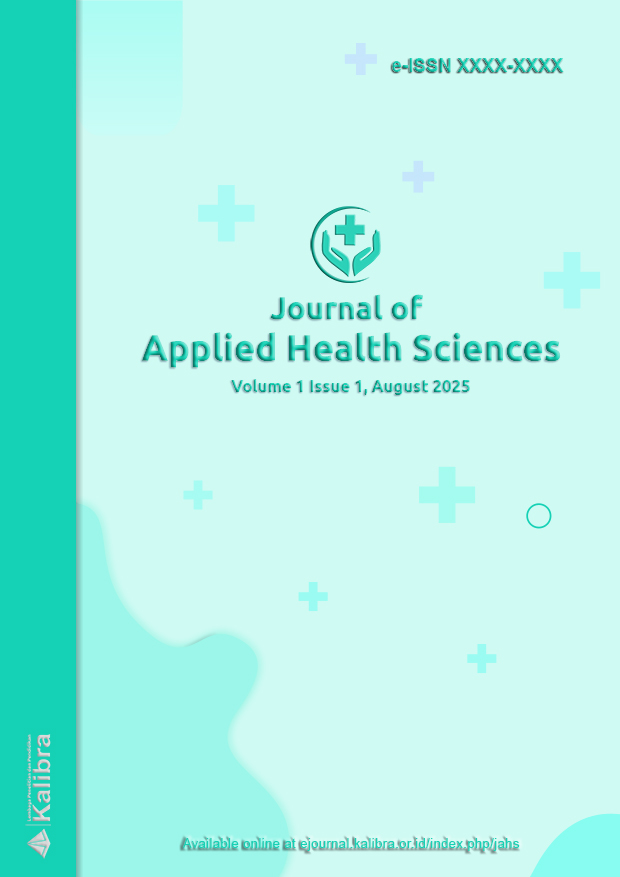Analisis Determinan Risiko Terhadap Indeks Fungsi Seksual pada Ibu Pascapersalinan
Keywords:
sexual function, postpartum women, risk determinants, reproductive health, female sexual function indexAbstract
The postpartum period represents a critical phase of physical and psychological adaptation for mothers, including changes in sexual function. Physiological alterations, psychological conditions, and social factors may influence the quality and satisfaction of sexual relationships after childbirth. This study aims to analyze the risk determinants associated with the sexual function index among postpartum women. An observational analytic study with a cross-sectional design was employed. The study sample consisted of mothers within 6 weeks to 6 months postpartum, selected using purposive sampling. Data were collected using the standardized Female Sexual Function Index (FSFI) questionnaire along with demographic and clinical data sheets. Bivariate analysis was conducted using the Chi-square test, while multivariate analysis employed logistic regression to identify dominant risk factors. The results showed that maternal age, parity, mode of delivery, fatigue level, and psychological conditions (including symptoms of postpartum depression) were significantly associated with FSFI scores (p < 0.05). Among these, psychological factors were identified as the most dominant determinants of decreased sexual function. These findings highlight the importance of adopting a holistic approach in postpartum care that incorporates sexual counseling, fatigue management, and mental health screening. Integrated interventions are expected to improve quality of life and intimate relationships among postpartum couples.
References
Irchami, Y. F., Irfan, H., Isanawidya, H. P., Avie, A. B., Patmini, E., Nugroho, A., & Rahman, M. N. (2018). Gangguan hasrat seksual pada wanita pascasalin dan hubungannya dengan cara persalinan. Jurnal Kesehatan Reproduksi, 5(1), 23–30. https://doi.org/10.22146/jkr.7117
Kurniawati, E. M., Prasha, Z. M., & Paraton, H. (2021). Comparison of dyspareunia using female sexual index score in 3-month, 6-month, and 12-month postpartum after vaginal delivery and cesarean section: Meta-analysis. Clinical and Experimental Obstetrics & Gynecology, 48(6), 1311–1319. https://doi.org/10.31083/j.ceog4806204
Noviana, C. A., Mayangsari, D., Dini, P. R., & Mujahidah, S. (2025). Narasi disfungsi seksual pada ibu pasca nifas riwayat persalinan spontan dan sectio caesarea. Journal of Midwifery, 3(2), 45–54. https://doi.org/10.63425/ljmw.v1i1.32
Nurita, R., Rinaldi, A., & Permadi, W. (2021). Perbandingan nilai Female Sexual Function Index pada wanita primipara berdasarkan metode persalinan. Indonesian Journal of Obstetrics & Gynecology Science, 9(2), 55–62. http://dx.doi.org/10.24198/obgynia.v4i2.257
Putri, N. A. R. (2023, February 18). Kejadian disfungsi seksual perempuan primipara pascasalin pervaginam di Rumah Sakit Umum Daerah Kota Bandung [Skripsi, Universitas Padjadjaran]. Repositori Universitas Padjadjaran.
ResearchGate. (2024). Pendidikan kesehatan untuk meningkatkan pengetahuan mengenai tanda bahaya masa nifas [Artikel]. ResearchGate.
Silfia, N. N., Usman, H., & Dewie, A. (2023). The effect of counseling on postpartum women’s sexual satisfaction. Jurnal Bidan Cerdas, 5(4), 191–198. https://doi.org/10.33860/jbc.v5i4.2995
Wahyuni, I. (2024). Asuhan kebidanan pada masa nifas dan menyusui berdasarkan evidence-based: Teori dalam praktik kebidanan profesional. Jakarta: Salemba Empat.
Downloads
Published
How to Cite
Issue
Section
License
Copyright (c) 2025 Luna Alfarizi, Anina Fatmawati, Santi Nawahita

This work is licensed under a Creative Commons Attribution-ShareAlike 4.0 International License.








